
Roots
The strand of textured hair, often seen as a mere physical attribute, holds within its very structure the whispers of generations, a living archive of identity and resilience. For too long, narratives of hair care have overlooked the deep wisdom embedded in ancestral practices, particularly those that speak to the unique needs of curls, coils, and waves. Our journey into what renders mongongo oil a protective agent for textured hair begins here, at the source—the primordial understanding that long predates modern chemistry. It begins with the stories etched into the very landscapes from which ingredients like mongongo sprang, stories of survival, adaptation, and profound connection to the earth’s offerings.
Consider the vast, arid expanse of the Kalahari Desert, a land of stark beauty and demanding conditions. Here, amid temperatures that scorch and winds that strip moisture from everything they touch, stands the mongongo tree, also known as the Manketti tree. Its nuts, rich with life-sustaining oil, were not merely a food source for the indigenous San communities; they were a balm, a shield, a legacy of care passed down through uncounted seasons.
The wisdom of these communities, honed by centuries of close observation and intimate coexistence with their environment, offers us a lens through which to truly appreciate the protective capacities of this remarkable oil. They understood, with an intuitive brilliance, that the elements could be both adversary and ally.

What are the Elemental Building Blocks of Textured Hair?
To truly appreciate mongongo oil’s guarding capabilities, we must first gaze upon the fundamental architecture of textured hair itself. Unlike straight hair, which typically presents a uniform, cylindrical shaft, textured strands are often ovoid or elliptical in cross-section. This unique shape, coupled with the way keratin proteins assemble, gives rise to the distinctive curl patterns we honor. Each curve and coil represents a point of vulnerability, a site where the cuticle, the hair’s outermost protective layer, lifts and shifts.
This inherent structural quality means textured hair often experiences more friction, more exposure to external aggressors, and a greater propensity for moisture loss. The cuticle layers, like shingles on a roof, are meant to lie flat, providing a smooth, sealed surface. In coiled hair, these shingles may not lie as uniformly, creating tiny gaps where vital hydration can escape and environmental damage can creep in.
From an ancestral perspective, this inherent dryness was not a flaw, but a characteristic to be worked with, understood, and nourished. Early caretakers of textured hair, observing its natural tendencies, would have instinctively sought out substances that could seal, soften, and fortify. They perceived the hair’s need for gentle handling, for consistent hydration, and for an external barrier against the sun’s relentless rays or the arid air. This empirical knowledge, born of daily lived experience, laid the groundwork for the modern understanding of lipids and their role in hair health.

How Did Early Custodians Recognize Mongongo Oil’s Protecting Aspects?
The ancestral recognition of mongongo oil as a guardian agent for hair was not an accident; it arose from keen observation and profound dependency on the natural world. The San people, living in the extreme conditions of the Kalahari, found in the mongongo tree a multifaceted provision. Its oil, extracted from the incredibly resilient nuts, offered a palpable sense of relief from the harsh climate.
When applied to skin, it soothed parched surfaces; when applied to hair, it seemed to soften, to add a luster, and crucially, to prevent the drying and brittleness that could lead to breakage. This was not a scientific discovery in the laboratory sense, but rather a collective wisdom, passed from elder to youth, rooted in generations of practical application.
The nuts, particularly the kernel, possess a substantial lipid content, including a high proportion of polyunsaturated fatty acids. Among these, alpha-eleostearic acid is a notable compound, recognized for its UV-protective properties. While ancient communities may not have articulated “UV protection” in our contemporary terms, they certainly observed the effects.
Hair treated with mongongo oil would likely have shown greater resilience to sun-induced brittleness and color fading, a visual and tactile testament to its guarding power. This ancient insight, that certain plant oils could create a durable, protective sheath, foreshadows modern understandings of lipid barriers and oxidative stress.
Mongongo oil’s historic use by indigenous communities reveals an intuitive grasp of its protective qualities against harsh environments, a living testament to ancestral botanical knowledge.
The act of preparing and applying the oil was itself a ritual, a connection to the land and a communal act of care. The women, often the primary custodians of this knowledge, would carefully collect the fallen fruits, crack the hard shells, and extract the precious nuts. Traditional methods often involved boiling the shelled nuts in water to separate the oil, which would then be skimmed from the surface.
This laborious but rewarding process underscored the oil’s value, not just as a commodity, but as a sacred element in their daily lives. The very process of its preparation, a slow alchemy of earth and water, instilled a reverence that transcended simple utility.
Consider the Lipid Composition of mongongo oil. It is rich in linoleic acid, oleic acid, and specifically, Alpha-Eleostearic Acid. Linoleic and oleic acids are well-known emollients, capable of softening and conditioning hair strands by sealing the cuticle. They help to trap moisture within the hair shaft, reducing the evaporation that leads to dryness and brittleness.
This is especially significant for textured hair, which, due to its structural convolutions, struggles more with retaining moisture. Alpha-eleostearic acid, a conjugated linolenic acid, is particularly noteworthy. This fatty acid forms a protective film on the hair and skin, offering defense against environmental aggressors. Scientific study has indicated its capacity to shield against ultraviolet radiation damage, a factor of immense importance in sun-drenched regions where the mongongo tree naturally thrives. This means the oil functions as a natural barrier, mitigating damage from the relentless solar rays and wind.
Beyond its fatty acid profile, mongongo oil also contains Vitamin E, a potent antioxidant. Antioxidants counteract the damaging effects of free radicals, unstable molecules generated by environmental exposure, including UV radiation and pollution. These free radicals can degrade keratin proteins and lipids within the hair, leading to weakened strands and a compromised cuticle.
The presence of Vitamin E helps to neutralize these destructive agents, preserving the hair’s structural integrity and overall vitality. This interplay of fatty acids and antioxidants makes mongongo oil a formidable protective agent, a natural shield inherited from ancient wisdom and validated by contemporary scientific inquiry.

Ancient Botanical Understanding of Hair Structure?
While our ancestors certainly lacked scanning electron microscopes, their understanding of hair was profoundly empirical and surprisingly astute. They observed hair’s natural inclination to coil, its varied textures, and its susceptibility to breakage. They understood that healthy hair possessed a certain elasticity, a capacity to bend and stretch without snapping. Dry hair, they learned, was brittle hair, easily fractured by styling or environmental exposure.
This tactile knowledge led them to seek out ingredients that conferred elasticity and suppleness. Mongongo oil, with its softening and conditioning properties, would have visibly improved these qualities, making hair more pliable and less prone to physical damage.
The cyclical nature of hair growth was also implicitly observed. They would have noticed periods of shedding and new growth, and perhaps understood that consistent, gentle care contributed to the longevity of each strand. The long-term application of mongongo oil, as part of a regular care regimen, would have supported overall hair health, creating an environment conducive to healthy growth and retention, thereby ensuring the continuity of vibrant hair within the community.
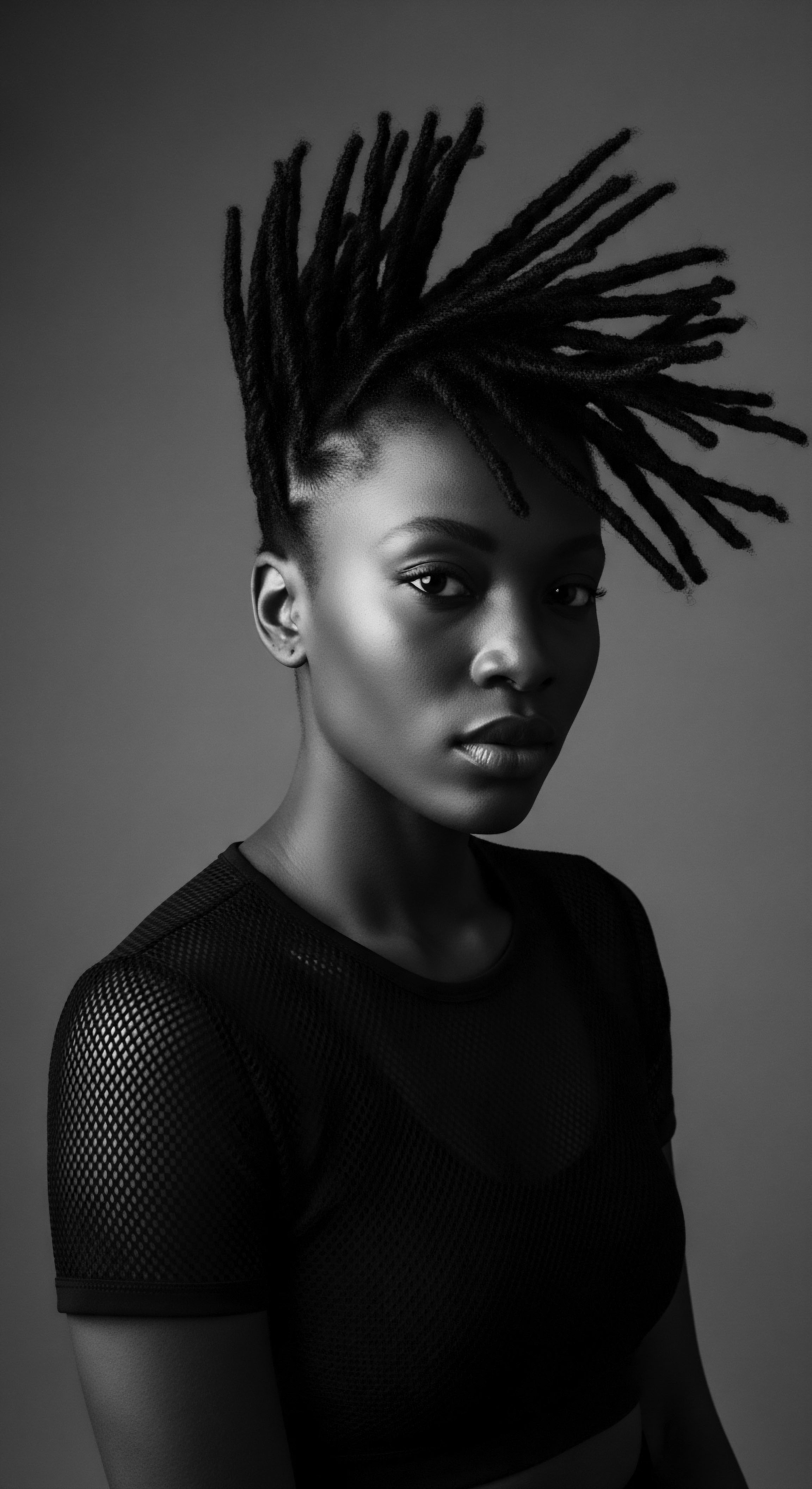
Ritual
The journey of mongongo oil from its source in the Kalahari to a guardian for textured hair extends beyond its chemical make-up; it settles deeply into the realm of ritual, a continuous practice that breathes life into cultural heritage. For communities whose survival depended on an intimate kinship with nature, daily care became intertwined with spiritual reverence. Hair, often considered a conduit to the divine or a symbol of status and identity, received meticulous attention, its care woven into the fabric of communal life. Mongongo oil was not merely applied; it was bestowed upon the hair, a blessing, a protective invocation against the sun, the wind, and the passage of time.
These ancestral practices were more than simple routines; they were living expressions of cultural understanding, a testament to what makes mongongo oil a protective agent for textured hair through consistent, mindful application. The preparation of the oil, often a collective endeavor, the gentle application, the communal gatherings where hair was styled and adorned—all these elements solidified its place in the heritage of care. They spoke of a holistic approach where well-being was inseparable from communal connection and deference for the earth’s provisions.
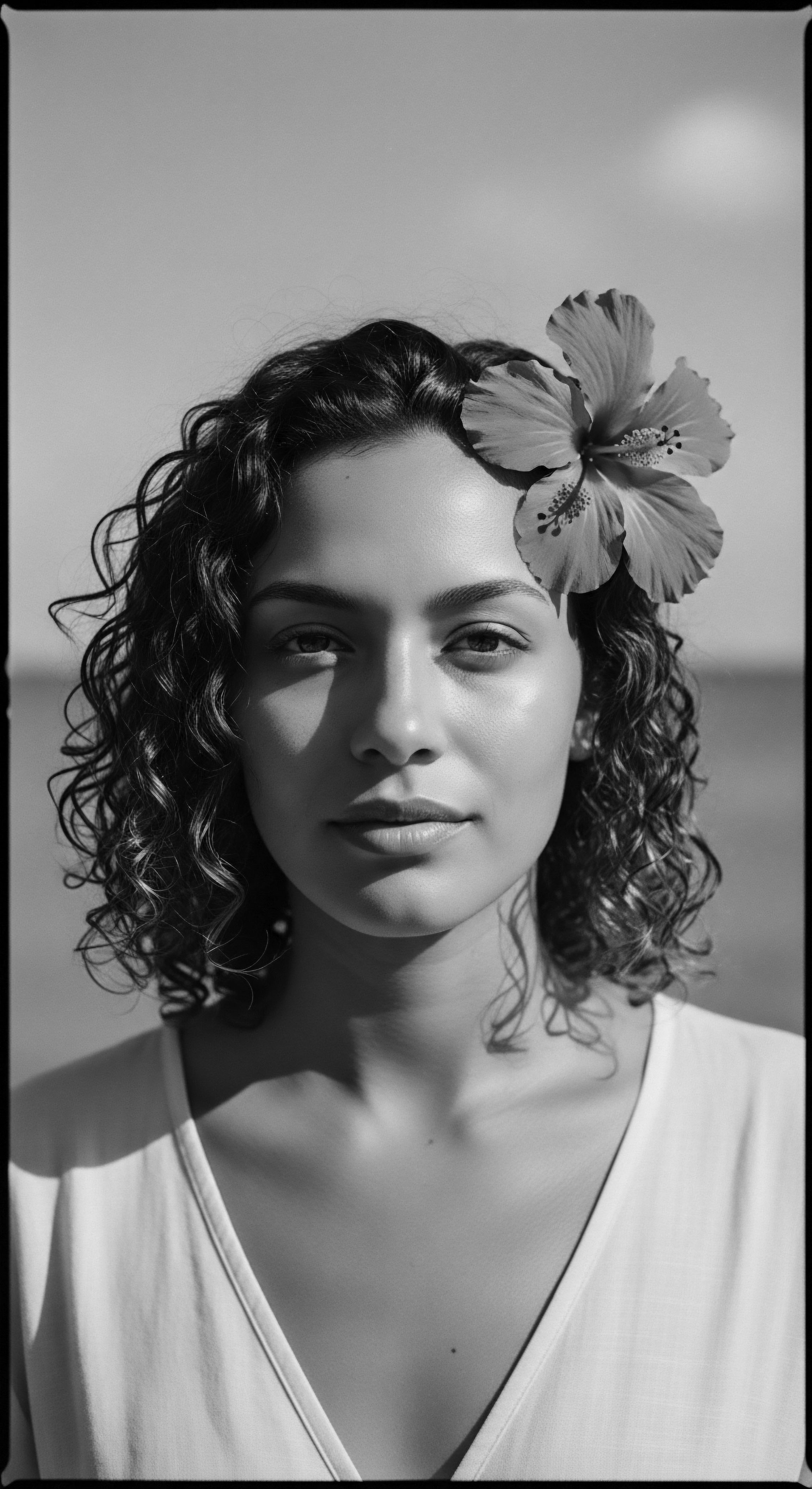
How Did Traditional Hair Care Practices Shape Modern Styling Techniques?
Protective styling, a widely recognized method for safeguarding textured hair today, draws heavily from ancestral ingenuity. Long before the term ‘protective style’ existed, communities across Africa and the diaspora devised intricate braids, twists, and locs that served dual purposes ❉ aesthetic expression and hair preservation. These styles kept delicate ends tucked away, minimized manipulation, and shielded strands from environmental stressors. Mongongo oil played a quiet yet crucial role within these traditions.
Its use as a sealant and a softener before and after styling would have facilitated the creation of these complex forms, reducing friction and breakage during the styling process. It would have also extended the longevity of the styles by maintaining moisture and flexibility, reducing the need for frequent re-styling that could lead to mechanical damage.
- Braiding ❉ Ancient African communities used braiding to signify status, marital state, or tribal affiliation. The tight interlacing of strands protected the hair shaft from exposure to harsh elements.
- Twisting ❉ Similar to braiding, twisting provided a means to manage and protect textured hair, often allowing for easier detangling and reduced breakage during periods of high activity.
- Locing ❉ A natural maturation of coiled hair, locs were (and remain) a powerful symbol of spiritual connection and cultural identity, traditionally maintained with natural oils and minimal intervention.
The application of mongongo oil within these traditional styling rituals would have been methodical. A small quantity, warmed perhaps by body heat or gentle friction, would be worked through sections of hair before braiding or twisting. This imparted slip, reducing snagging and allowing for smoother, less damaging manipulation.
After the style was complete, a light coating might seal the surfaces, adding a subtle luster and a further layer of protection. This mindful layering of care, from preparation to finishing, speaks to a deep ancestral understanding of hair’s delicate needs.

What Traditional Tools Complemented Mongongo Oil in Hair Care?
The tools of ancestral hair care were as intuitive and effective as the ingredients themselves, designed to respect the fragile nature of textured strands. Often crafted from readily available natural materials—bone, wood, shells, or even fingers—these implements worked in harmony with oils like mongongo. Wide-toothed combs, meticulously carved, gently detangled hair that had been softened by the oil, minimizing breakage.
Smooth sticks or bone pins might have been used to section hair for braiding, their surfaces polished to prevent snagging. The human hand, however, remained the primary and most sensitive tool, its warmth aiding the oil’s absorption, its touch conveying care and connection.
The use of certain tools, coupled with the consistent application of mongongo oil, created a synergistic system of care. For example, massaging the scalp with the oil using fingertips stimulated blood flow, encouraging healthy hair growth, a benefit recognized by modern science (Gorey et al. 2023).
This gentle manipulation, facilitated by the oil’s slip, also helped distribute sebum, the scalp’s natural oil, down the hair shaft, creating an additional layer of natural protection. This integrated approach, combining beneficial ingredients with appropriate tools and sensitive techniques, forms the bedrock of textured hair heritage care.
| Traditional Tool Fingers |
| Purpose with Mongongo Oil Gentle application, massage, detangling after oil softening |
| Contemporary Parallel Soft brushes, detangling combs, hands |
| Traditional Tool Wide-toothed wooden comb |
| Purpose with Mongongo Oil Detangling softened hair, distributing oil |
| Contemporary Parallel Plastic or bamboo wide-tooth combs |
| Traditional Tool Bone or wood pins |
| Purpose with Mongongo Oil Sectioning hair for styling, securing braids |
| Contemporary Parallel Sectioning clips, hair ties |
| Traditional Tool The evolution of hair tools reflects an enduring goal ❉ to work harmoniously with hair's natural form, especially with the aid of protective oils. |
The application of mongongo oil transformed utilitarian care into a deeply rooted ritual, a testament to the cultural reverence for hair health and communal connection.
Beyond the practicalities, these rituals were expressions of cultural identity. Hair was a canvas for stories, a living testament to heritage. The care taken, the communal aspect of grooming sessions, the sharing of ancestral wisdom – all these elements strengthened communal bonds and reinforced a collective appreciation for hair as a sacred aspect of self.
Mongongo oil, with its consistent presence in these moments, became symbolically linked to resilience, beauty, and the preservation of identity. It was not merely a product; it was a participant in the ongoing story of a people.
Even in challenging environments, such as during long journeys or periods of drought, the protective properties of mongongo oil would have been particularly valued. Its capacity to seal moisture and shield against environmental stress would have allowed hair to maintain a degree of health and manageability that would otherwise be impossible. This pragmatic protection, intertwined with the spiritual and communal meaning of hair, cemented mongongo oil’s standing as an indispensable part of their wellness tradition.
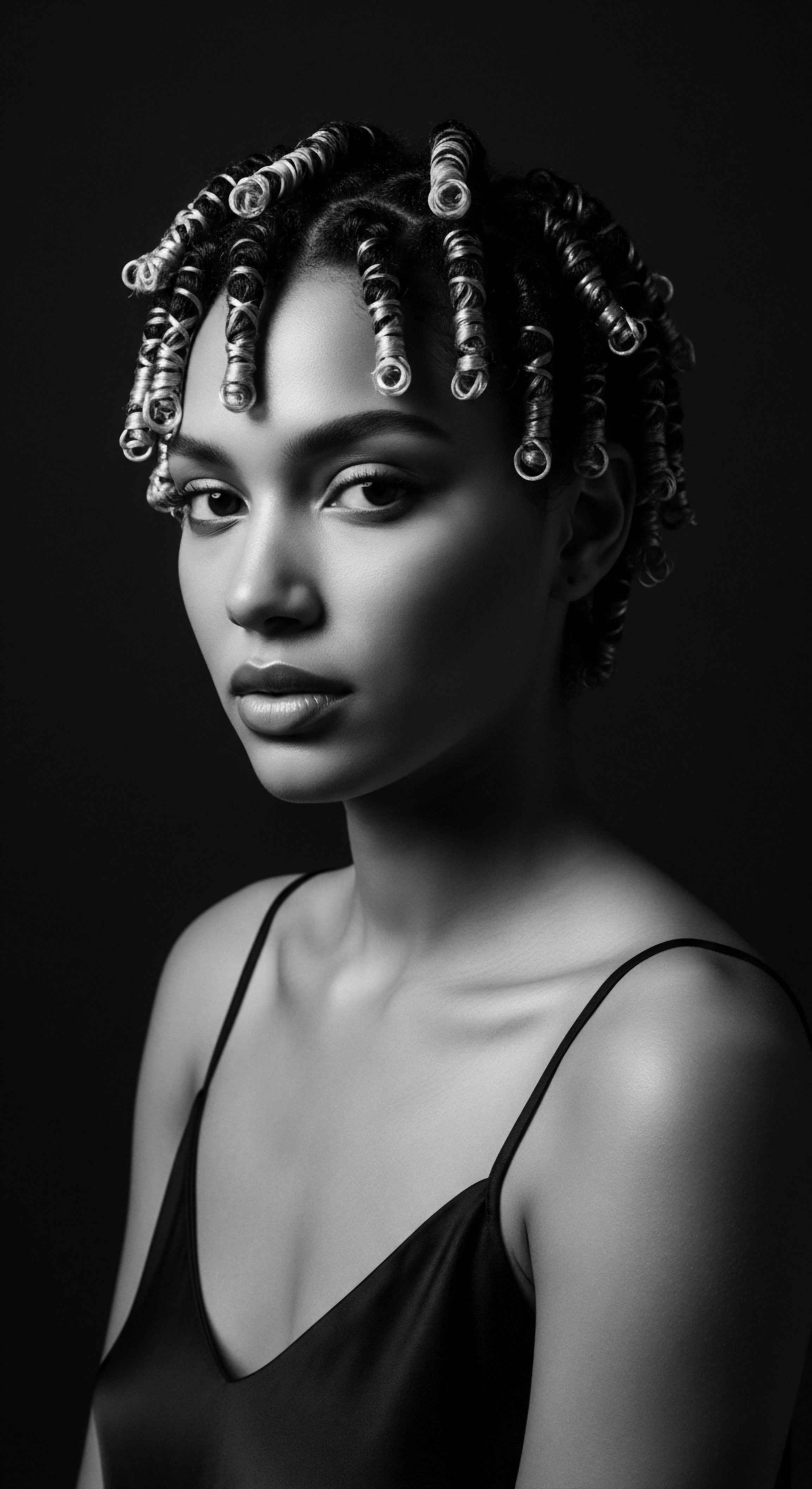
Relay
The baton of wisdom, concerning what makes mongongo oil a protective agent for textured hair, passes through generations, carrying with it the undeniable resonance of ancestral knowledge, yet gaining new dimensions through contemporary understanding. Today, we stand at an intersection where the rigorous methods of science meet the profound insights of cultural practices, illuminating the intricate dance between molecular composition and lived experience. This confluence allows us to articulate, with greater precision, the scientific underpinnings of what indigenous communities understood intuitively for centuries ❉ the remarkable capacity of mongongo oil to guard and fortify textured strands against the exigencies of both nature and styling.
The narrative of textured hair heritage is not static; it is a dynamic relay, each era adding its voice to the chorus. Our contemporary appreciation for mongongo oil is deeply informed by the struggles and triumphs of Black and mixed-race communities throughout history, particularly as they navigated imposed beauty standards and reaffirmed the innate beauty of their natural hair. This oil, sourced from the very soil of their ancestors, becomes a symbol of reclaiming and re-centering ancestral care philosophies, offering a tangible link to a storied past while shaping a vibrant future for hair wellness.

What Scientific Research Validates Mongongo Oil’s Protective Qualities?
Modern scientific inquiry has begun to unravel the complex mechanisms by which mongongo oil provides its protective benefits, lending weight to the ancestral practices that championed its use. The key lies in its unique lipid profile and the presence of specific bioactive compounds. As previously touched upon, the significant concentration of Alpha-Eleostearic Acid is of particular scientific interest.
This unusual conjugated fatty acid, a type of polyunsaturated fatty acid, is known to polymerize rapidly when exposed to air and UV light, forming a thin, durable film. This film, when present on the hair shaft, acts as a physical barrier, effectively shielding the underlying keratin structure from external aggressors.
Consider the relentless assault of environmental factors on hair ❉ the damaging ultraviolet radiation from the sun, the drying effects of wind, and the pervasive pollutants in our atmosphere. Textured hair, with its naturally open cuticle due to its coiled structure, is especially susceptible to these stressors. The protective film formed by mongongo oil’s alpha-eleostearic acid helps to mitigate this vulnerability. It acts as a sacrificial layer, absorbing or reflecting a portion of the UV radiation before it can degrade the hair’s proteins and lipids.
This protective action helps preserve the hair’s color, its structural integrity, and its overall moisture content. Research indicates that the oil applied to skin and hair does offer UV protection.
Furthermore, the oil’s rich content of Linoleic Acid, an omega-6 fatty acid, contributes significantly to its protective abilities. Linoleic acid is a vital component of the hair’s natural lipid barrier. When applied topically, it can help to reinforce this barrier, reducing transepidermal water loss from the scalp and preventing moisture evaporation from the hair shaft.
This sustained hydration is absolutely critical for textured hair, which tends to be drier than straight hair due to the difficulty of natural scalp oils traveling down the curly strands. A well-hydrated hair strand is a strong strand, more resistant to breakage from styling and less susceptible to the damaging effects of environmental dryness.
Beyond these structural and moisture-retaining attributes, mongongo oil also possesses potent Antioxidant Compounds, notably Vitamin E. Oxidative stress, caused by free radicals, plays a substantial role in hair damage, leading to protein degradation, loss of elasticity, and dullness. By neutralizing these free radicals, the Vitamin E within mongongo oil helps to preserve the hair’s cellular health and its natural luster. This dual action—physical barrier formation and antioxidant defense—positions mongongo oil as a truly exceptional protective agent, a testament to the sophisticated chemistry found within nature’s offerings.

How does Ancestral Understanding Align with Modern Hair Science?
The validation of ancestral wisdom by contemporary scientific methods offers a powerful framework for understanding textured hair care. What the San people instinctively recognized as the oil’s capacity to guard against the desert’s harshness, modern trichology explains through molecular interactions. This alignment underscores a core Roothea principle ❉ that genuine progress in hair wellness involves honoring the past while embracing new knowledge.
The traditional practice of regularly applying mongongo oil to hair was, in essence, an intuitive form of protective layering. Ancestors understood that consistent application kept hair supple and strong. Modern science explains this by identifying the oil’s ability to replenish the hair’s lipid content, particularly at points where the cuticle might be compromised due to the hair’s natural curvature. This constant replenishment strengthens the hair’s external defenses against the elements and mechanical stressors inherent in styling.
The journey of mongongo oil from ancient protection to scientific validation exemplifies the enduring power of ancestral wisdom in understanding hair’s intricate needs.
A noteworthy example of this alignment is found in the way mongongo oil protects hair against environmental damage, particularly from sun exposure. The San people, living in direct sunlight, would have observed less damage to hair treated with the oil. This observation aligns directly with the scientific identification of alpha-eleostearic acid as a natural UV filter, as noted in studies that document the oil’s hydrating, regenerating, and restructuring properties and its UV protection for hair and skin. This specific property, combined with its emollient capabilities, makes the oil a comprehensive shield.
Moreover, the traditional belief in hair’s vitality and connection to overall well-being is echoed in current holistic approaches to hair health. The very act of massaging mongongo oil into the scalp, a practice documented in many ancestral cultures, improves circulation to the hair follicles (Gorey et al. 2023).
This increased blood flow delivers vital nutrients, reinforcing the hair’s growth cycle and strengthening strands from the root. This is a clear demonstration of how ancestral practices, intuitively understood as beneficial, are now explained by the scientific mechanisms of cellular nourishment and follicular health.
The integration of ancestral botanical knowledge into modern cosmetic formulations is a testament to this relay of understanding. Instead of viewing historical practices as quaint relics, we can recognize them as sophisticated, empirically derived systems of care. Mongongo oil stands as a luminous example of an ingredient whose protective qualities for textured hair were understood and utilized for centuries by those most intimately connected to its source, their wisdom now amplified and clarified by the lens of scientific inquiry.
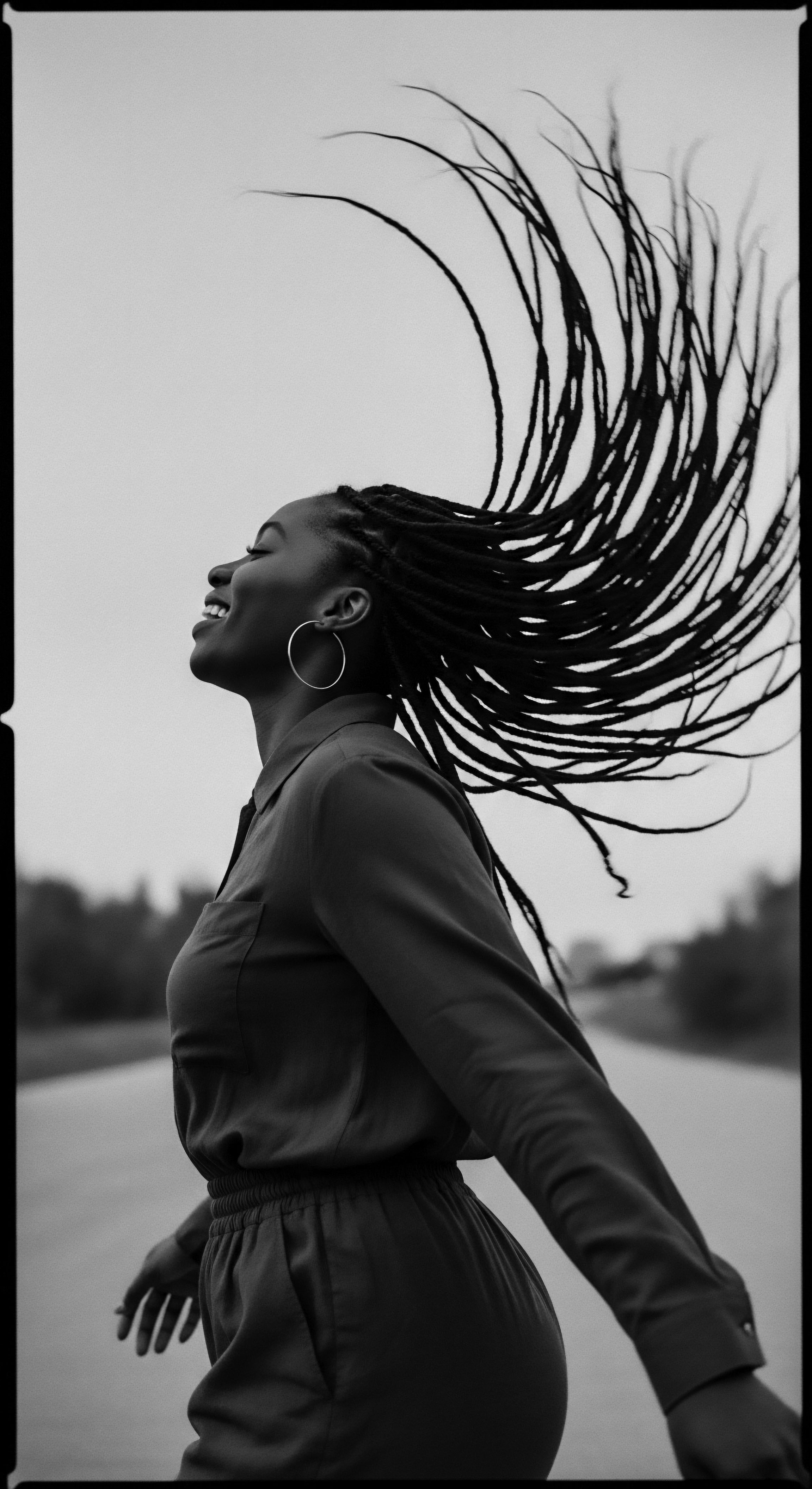
Reflection
Our exploration of mongongo oil and its guardianship of textured hair ultimately guides us back to the heart of Roothea’s ethos ❉ the profound understanding of the ‘Soul of a Strand.’ This is not merely about the molecular structures or historical timelines; it is about the living, breathing legacy held within each coil and kink, a story of resilience, identity, and enduring beauty. Mongongo oil, born of the Kalahari’s formidable embrace and cherished by the San people for countless generations, stands as a symbol of this powerful continuity. It reminds us that the most effective forms of care often echo the wisdom of ancestors, validated by the very elements that shaped their existence.
The journey from the intuitive application of a wild-harvested oil to its scientific validation reveals a circular wisdom. Ancestors, through deep environmental immersion, understood the protective qualities of mongongo oil against the sun’s relentless glare and the dry, abrasive winds. They saw it soften, strengthen, and preserve.
Today, we dissect its alpha-eleostearic acid and Vitamin E content, affirming those observations with precision. This convergence is not a replacement of old ways with new, but a harmonious joining, where ancestral knowledge acts as the compass guiding modern discovery.
For textured hair, often navigating centuries of dismissal and misunderstanding, mongongo oil offers more than just conditioning. It presents a tangible link to a heritage of self-sufficiency, ingenuity, and profound connection to the land. It speaks to the ingenuity of communities who learned to thrive despite challenging circumstances, finding sustenance and solace in the very plants around them. Applying mongongo oil becomes an act of honoring this lineage, a gentle acknowledgment of the care that has been extended to textured strands through time, a silent promise to carry this legacy forward.
In each drop of mongongo oil, then, we find not just lipids and antioxidants, but echoes of communal gatherings, the whispers of ancient rituals, and the defiant spirit of those who understood their hair as an extension of their being, a crown bestowed by nature. The protection it offers is not just against environmental elements; it is a protection of identity, a shielding of history, and a nurturing of the future of textured hair, allowing each strand to stand strong, vibrantly alive, and truly unbound.
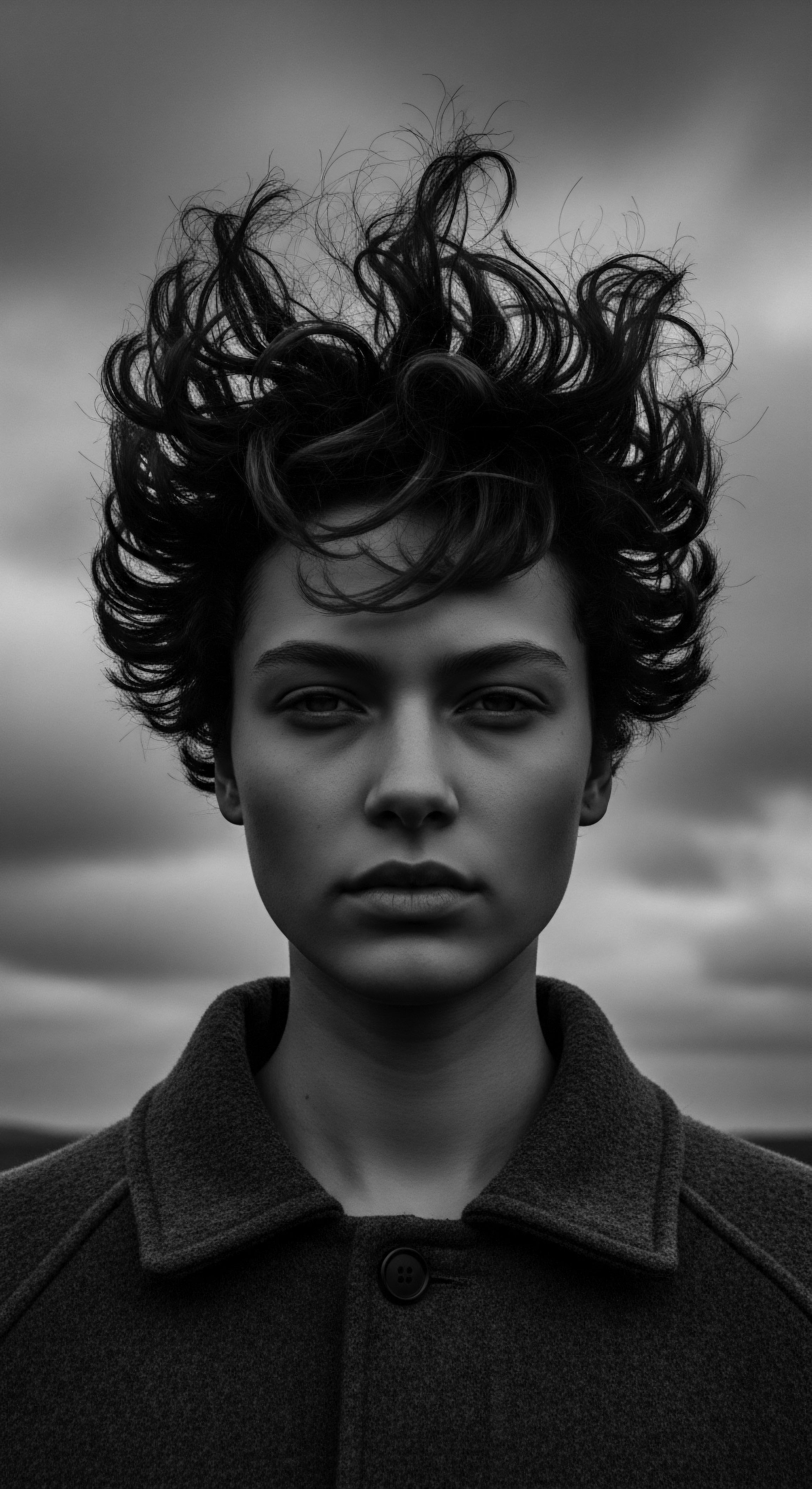
References
- Gorey, D. Bindra, D. Rairam, D. & Kaur, T. (2023). Hair Oils ❉ Indigenous Knowledge Revisited. International Journal of Trichology, 15(4), 162-171.
- Zimba, N. et al. (2018). Contribution of Schinziophyton rautanenii to Sustainable Diets, Livelihood Needs and Environmental Sustainability in Southern Africa. Sustainability, 10(3), 675.
- Thomas, E. M. (1959). The Harmless People. Alfred A. Knopf.
- Marshall, L. (1976). The !Kung of Nyae Nyae. Harvard University Press.
- Marshall, L. (1999). Nyae Nyae !Kung ❉ Beliefs and Rites. Harvard University Press.
- Howell, N. (2010). Life Histories of the Dobe !Kung ❉ Food, Fatness and Well-being over the Life Span. University of Toronto Press.
- Biesele, M. & Hitchcock, R. K. (2011). The Ju/’hoan San of Nyae Nyae and Namibian Independence ❉ Development, Democracy and Indigenous Rights. Berghahn Books.
